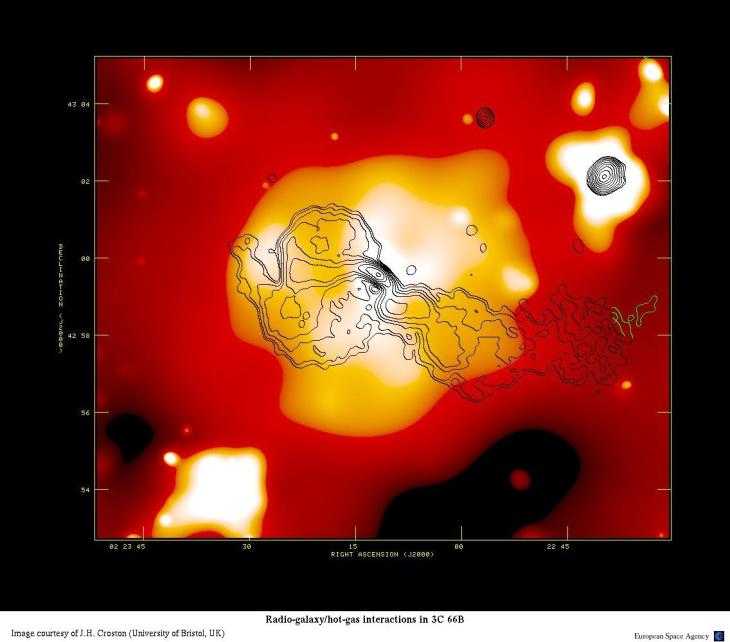
 Credit: X-ray Image courtesy of J.H. Croston (University of Bristol, UK) and ESA; radio map from Hardcastle et al. (1996)
Credit: X-ray Image courtesy of J.H. Croston (University of Bristol, UK) and ESA; radio map from Hardcastle et al. (1996)
Jet Exhausted
Supermassive black holes at the center of so-called "active galaxies" can produce narrow fast streams or jets stretching for millions of light years. How these jets are produced and kept so narrowly confined over such huge distances of space is not known. Adding to the mystery, sometimes the jets are symmetrically placed around the center of the "radio galaxy", while at other times the jet on one side is much more prominent than the opposite jet. Astronomers suspect that these different jet shapes may have to do with the interactions between the jet and very hot gas inside the galaxy. X-ray observatories like the Chandra X-ray Observatory and the
XMM-Newton X-ray Observatory allow astronomers to determine in detail how the radio jets depend on the properties of the hot, X-ray producing gas. The image above is an
image of the radio galaxy 3C66B obtained by the XMM-Newton observatory, with contours of radio emission showing the orientation and shape of the radio jet. The images shows "holes" in the X-ray emission at the positions of the radio lobes, and shows a bright spot of X-rays near the end of the rightmost jet which may represent a collision which slowed the expansion of the jet into intergalactic space.
Last Week *
HEA Dictionary * Archive
* Search HEAPOW
* Education
Each week the HEASARC
brings you new, exciting and beautiful images from X-ray and Gamma ray
astronomy. Check back each week and be sure to check out the HEAPOW archive!
Page Author: Dr. Michael F. Corcoran
Last modified Monday, 26-Feb-2024 17:09:27 EST


